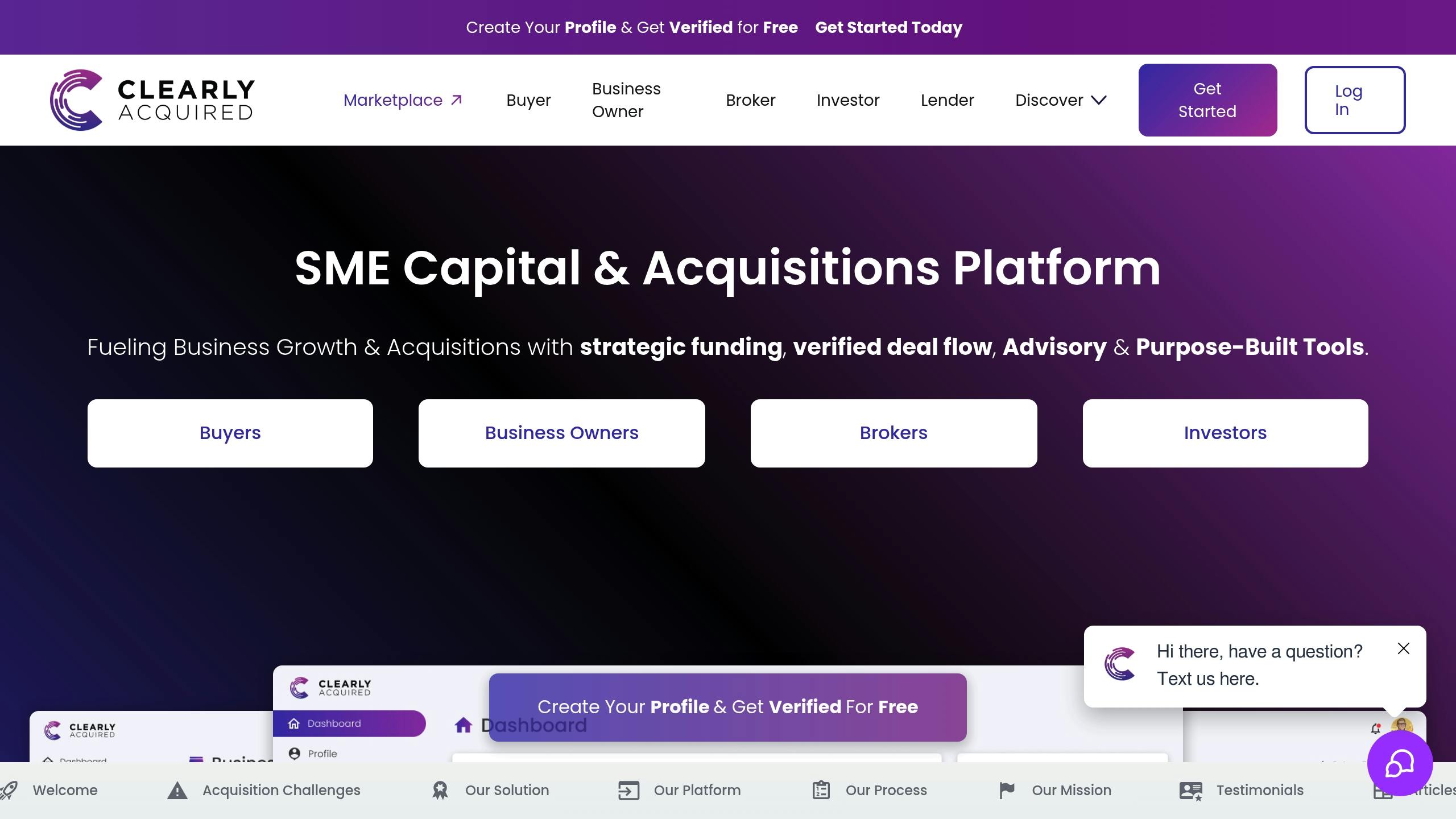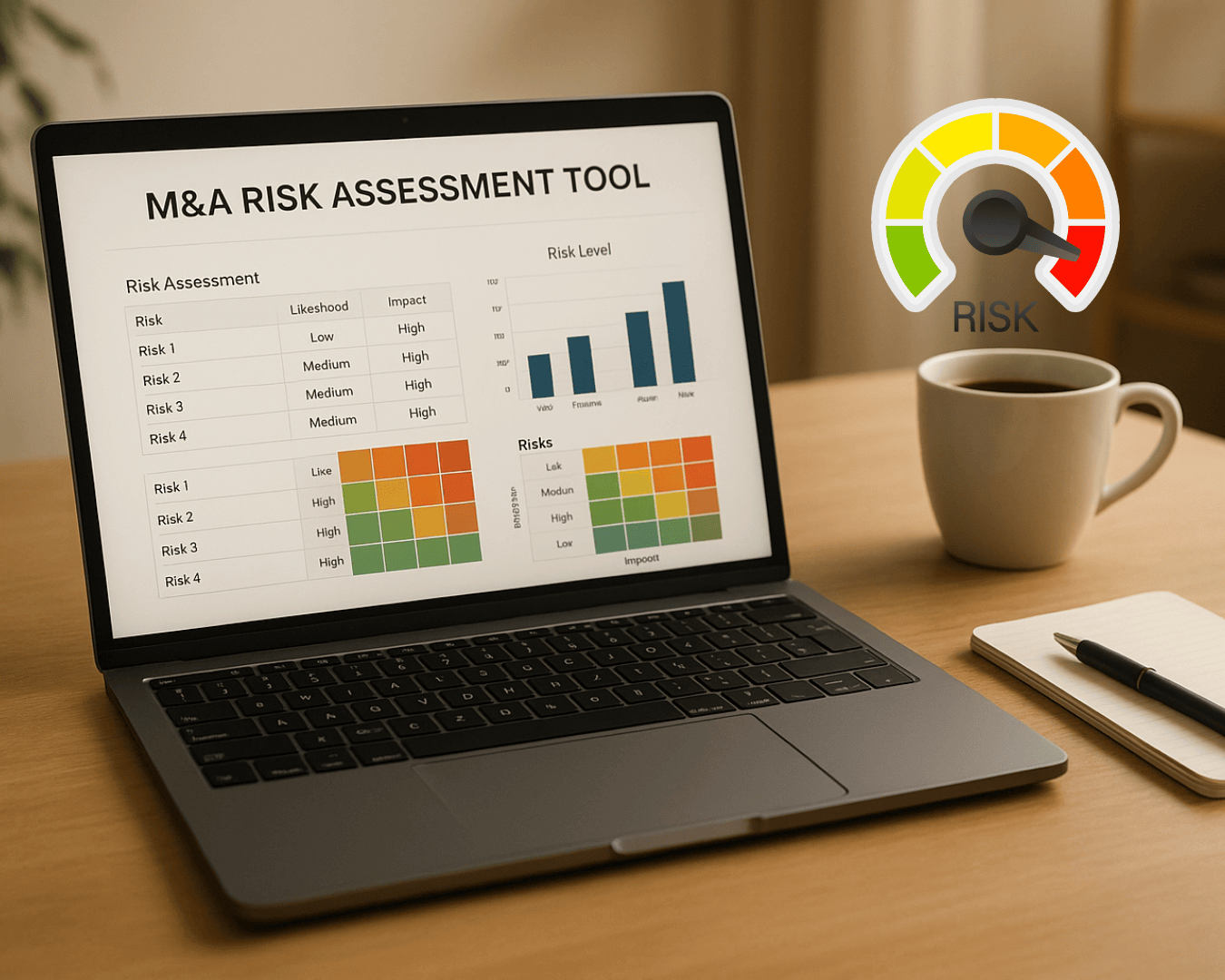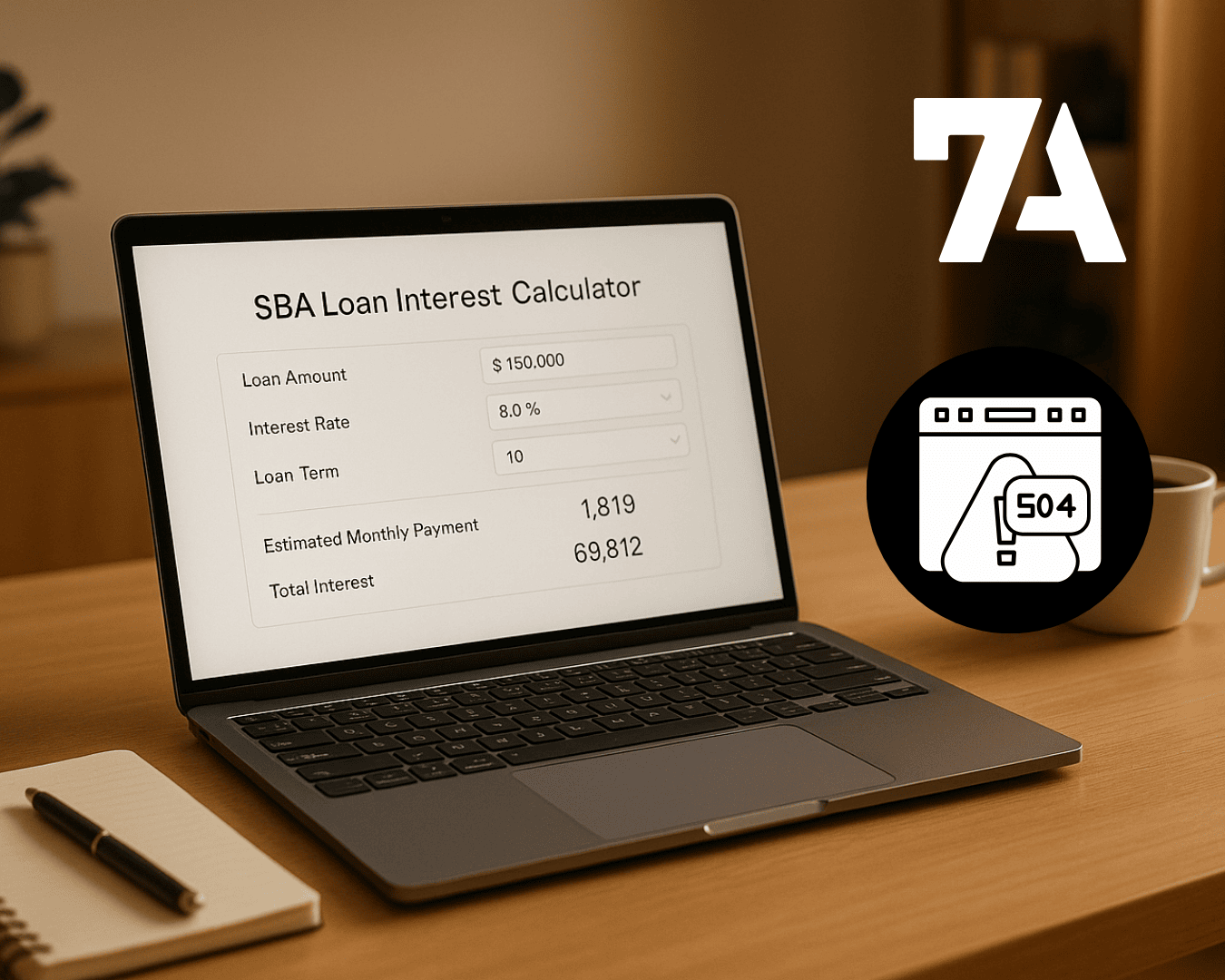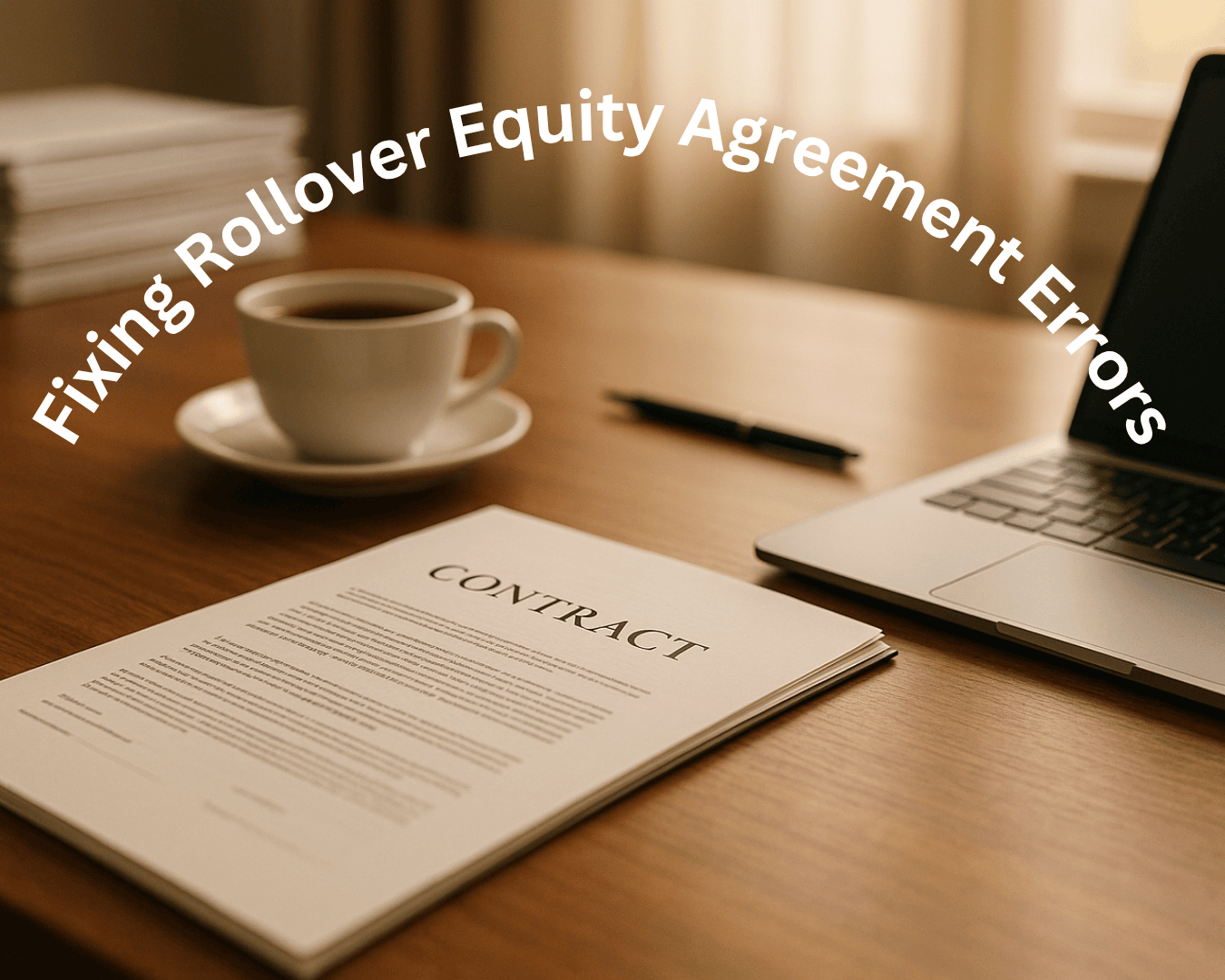When two businesses come together, how you manage their brands can make or break the success of the acquisition. This guide simplifies the process of creating a brand strategy post-acquisition. Here's what you'll learn:
- Why Brand Strategy Matters: Protect customer trust, align teams, and clarify your market position.
- Common Challenges: Avoid customer confusion, employee resistance, and market missteps.
- Steps to Success:
- Conduct a brand audit: Analyze visual identity, voice, and market position.
- Set clear brand goals: Focus on market share, customer retention, and employee engagement.
- Choose the right brand structure: Options include merging brands, keeping them separate, or a hybrid approach.
- Build a unified brand identity: Update visuals, messaging, and communication tools.
- Launch Plan: Roll out changes in phases - pre-launch, internal launch, and external launch.
- Track Performance: Use metrics like customer feedback, market share, and employee adoption to measure success.
This step-by-step approach ensures a smooth transition while safeguarding both brands' value and setting the stage for growth.
Brand Strategy Post-Merger
Brand Analysis
A brand analysis helps identify a company's strengths, weaknesses, and potential challenges in merging with another brand. This process lays the groundwork for strategic decision-making.
Steps for a Brand Audit
Start by evaluating each brand's visual identity, communication style, and position in the market:
1. Visual Identity Check
Look at:
- Logos and how they’re used
- Color schemes and fonts
- Design templates and systems
- Marketing materials
- Digital assets, including websites
2. Brand Voice Review
Analyze how the brand communicates across different platforms:
- Tone and messaging guidelines
- Content strategy
- Social media activity
- Customer service communication
- Sales materials
3. Market Position Analysis
Understand where each brand stands in the market:
- Key audience segments
- Competitors
- Pricing strategy
- Distribution channels
- Geographic reach
Evaluating Brand Value
Use a mix of financial data, customer feedback, and market performance to measure brand strength:
Financial Metrics
- Revenue per customer
- Cost of acquiring new customers
- Percentage of sales driven by the brand
- Market share
- Ability to command premium pricing
Customer Feedback
- Net Promoter Score (NPS)
- Brand awareness levels
- Customer satisfaction scores
- Social media sentiment
- Online reviews and feedback
Market Performance
- Search volume trends
- Website traffic
- Social media engagement
- Lead generation
- Conversion rates
Comparing Brand Similarities and Differences
Use a brand alignment matrix to compare and contrast key elements of both brands:
| Brand Element | Acquiring Company | Acquired Company | Integration Opportunity |
|---|---|---|---|
| Core Values | Outline existing values | List current principles | Highlight shared values |
| Target Market | Define customer segments | Identify audience groups | Explore overlapping markets |
| Brand Promise | State value proposition | Note key benefits offered | Create a unified message |
| Market Position | Describe current standing | Assess existing reputation | Plan a combined strategy |
When analyzing, focus on two main areas:
Areas of Overlap
- Shared values and mission
- Similar customer groups
- Comparable quality standards
- Complementary products or services
- Aligned corporate cultures
Distinct Features
- Niche markets
- Regional strengths
- Specialized expertise
- Technological advantages
- Unique customer relationships
These findings are crucial for shaping a cohesive brand identity moving forward.
Creating the New Brand Plan
Using the results from your brand audit, craft a clear plan to bring both brands together. This plan should align with key business goals, market positioning, and what stakeholders need. Focus on setting clear objectives and creating a structure that ensures smooth integration.
Setting Brand Goals
Your brand goals should align with overall business priorities and leverage the strengths of each company.
Strategic Objectives
- Target specific market share and revenue goals
- Improve customer retention rates
- Boost brand awareness through measurable metrics
- Increase employee engagement
Implementation Timeline
- Short-term (0-6 months): Make immediate updates to the brand
- Mid-term (6-18 months): Roll out full integration efforts
- Long-term (18+ months): Focus on evolving the brand
Selecting Brand Structure
Choose a brand structure that addresses integration challenges while supporting your goals. Here's a breakdown of common options:
| Brand Structure | Best Used When | Key Benefits | Potential Challenges |
|---|---|---|---|
| House of Brands | Products target different markets | Preserves individual brand equity | Higher marketing costs |
| Branded House | A strong parent brand exists | Creates a unified presence | Risk of brand dilution |
| Endorsed Brands | Parent brand adds credibility | Balances independence and connection | Complex to manage |
| Hybrid Model | Markets need a mix of strategies | Offers flexibility | Needs clear guidelines |
Building Brand Identity
Develop a cohesive brand identity that represents the new organization's values and vision.
Visual Elements
- Design a unified visual system
- Update brand guidelines to reflect the integration
- Create templates for marketing and communication materials
- Build a digital library for easy access to assets
Brand Voice
- Define a communication style that resonates with the new audience
- Establish a hierarchy for messaging
- Set clear tone guidelines for consistency
Implementation Tools
- Use an asset management system to organize materials
- Provide training materials for teams
- Implement quality control processes to maintain consistency
Clear guidelines are essential to ensure the new brand is applied consistently across all teams. Once the unified identity is in place, use performance metrics to track progress and make adjustments as needed.
sbb-itb-a3ef7c1
Launching the Brand Strategy
Rolling out your brand strategy requires careful planning to ensure everyone is on the same page and the process stays consistent.
Timeline and Steps
A phased approach helps manage the transition smoothly:
Phase 1: Pre-Launch (30-60 days)
- Finalize brand assets and guidelines
- Set up systems to manage brand assets
- Prepare training materials
- Create channels for feedback
- Test new branded materials
Phase 2: Internal Launch (2-4 weeks)
- Train department leaders
- Update internal systems, documents, and signage
- Refresh email signatures and templates
- Align internal platforms with the new brand
Phase 3: External Launch (60-90 days)
- Update website and digital platforms
- Revamp marketing materials
- Transition physical assets
- Adjust legal documents
- Introduce new customer touchpoints
Strong internal communication is key to making this transition seamless.
Employee Communication Plan
Good communication within your team reduces resistance and builds enthusiasm. Focus on these critical touchpoints:
| Communication Type | Timing | Purpose | Format |
|---|---|---|---|
| Initial Announcement | Day 1 | Share vision and timeline | All-hands meeting |
| Training Sessions | Weeks 2-4 | Build brand understanding | Department workshops |
| Progress Updates | Bi-weekly | Maintain momentum | Team meetings |
| Support | Ongoing | Address questions | Digital hub |
Steps for Success
- Develop detailed brand guidelines and training resources
- Build a network of brand champions across teams
- Create a dedicated channel for questions and feedback
- Schedule regular leader check-ins
- Provide tools for consistent branding across all touchpoints
Customer and Partner Updates
Clear communication with external stakeholders ensures a smooth transition.
Communication Strategy
- Send personalized updates to key accounts
- Share FAQ documents to address common concerns
- Provide transition guides for partners
- Train customer support teams for the new launch
- Monitor social media and review platforms for feedback
Digital Presence Updates
- Synchronize updates across social media profiles
- Refresh email templates
- Revise customer-facing documents
- Update partner resources and portals
- Adjust digital ad campaigns to reflect the new branding
Tracking Brand Performance
Brand Success Metrics
Here are some key indicators to help you measure how well your brand integration is performing:
| Metric Category | Key Measurements | Target Timeline |
|---|---|---|
| Brand Awareness | Share of voice, brand mentions, social media reach | Monthly |
| Customer Perception | Net Promoter Score (NPS), sentiment analysis, brand association | Quarterly |
| Market Performance | Market share, revenue growth, customer retention rate | Monthly |
| Digital Presence | Website traffic, social engagement, search rankings | Weekly |
| Internal Adoption | Employee brand compliance, internal surveys | Quarterly |
These metrics provide a guide for making tactical changes to your post-acquisition brand strategy.
Quantitative and Qualitative Data
To get a complete picture, focus on both numbers and customer insights.
Digital Analytics
- Keep an eye on website traffic before and after rebranding.
- Measure social media engagement rates.
- Track email marketing performance.
- Monitor search rankings for important brand-related terms.
These numbers should be paired with direct customer feedback for a fuller understanding.
Financial Metrics
- Revenue per customer
- Customer acquisition costs
- Conversion rates
- Market share
Customer Feedback Methods
Gather feedback using a variety of methods:
- Satisfaction surveys
- Post-interaction forms
- Focus groups
- One-on-one customer interviews
- Social sentiment tracking
- Monitoring reviews
- Analyzing customer support interactions
- Tracking website behavior
To make the process smoother, set up structured feedback loops:
- Use automated survey triggers.
- Schedule regular review sessions.
- Implement feedback management systems.
- Create customer advisory boards.
This feedback will help guide the next steps in refining your brand strategy.
Brand Adjustment Process
Once you've collected performance data and customer insights, adjust your strategy through the following steps:
1. Regular Performance Reviews
Hold monthly meetings to compare your metrics against set benchmarks.
2. Feedback Integration
- Centralize all feedback.
- Sort feedback by its impact and urgency.
- Prioritize the most important changes.
- Roll out updates in an organized way.
3. Continuous Optimization
- Revisit your guidelines every quarter.
- Update training materials as needed.
- Adjust messaging based on customer responses.
- Refine visual elements to maintain alignment with your brand identity.
Conclusion
Main Steps Review
A solid post-acquisition brand strategy requires careful planning and execution. Here's what it involves:
Brand Analysis and Planning
- Conduct audits to evaluate the brand's value and align its strengths.
- Define clear, measurable goals.
- Choose the right brand architecture for the integration.
Implementation and Communication
- Develop detailed timelines for integration.
- Craft clear communication strategies to keep stakeholders informed.
- Update brand elements like logos, messaging, and visuals.
- Train employees to align with the new brand direction.
- Ensure consistent messaging across all channels.
Monitoring and Adjustment
- Track key metrics and collect feedback regularly.
- Make informed adjustments based on data.
- Share milestones and successes to build momentum.
- Review progress quarterly to stay on track.
Specialized tools and platforms can simplify these steps and improve outcomes.
Using Clearly Acquired

Technology can play a crucial role in streamlining post-acquisition strategies. Clearly Acquired offers tools designed to simplify brand integration. With over $6.5 million in businesses sold monthly through its platform [1], it provides features that help ensure a smooth transition.
"Modernizing Business Financing and Acquisitions with Clarity and Efficiency." - Clearly Acquired [1]
Here’s how Clearly Acquired supports your integration process:
| Feature | How It Helps with Brand Strategy |
|---|---|
| Deal Management Hubs | Centralizes all brand documentation and transition plans in one place. |
| AI-Powered Tools | Quickly analyze brand performance metrics for better decision-making. |
| Expert Support | Access to 125+ advisors for professional guidance. |
| Verified User Network | Connect with experienced professionals for insights and advice. |
For businesses navigating the complexities of post-acquisition integration, Clearly Acquired provides a structured approach. Its tools help maintain momentum while safeguarding brand equity, ensuring both immediate and long-term success.











.png)







































.png)








































%20Loan%20Application%20Checklist.png)

















